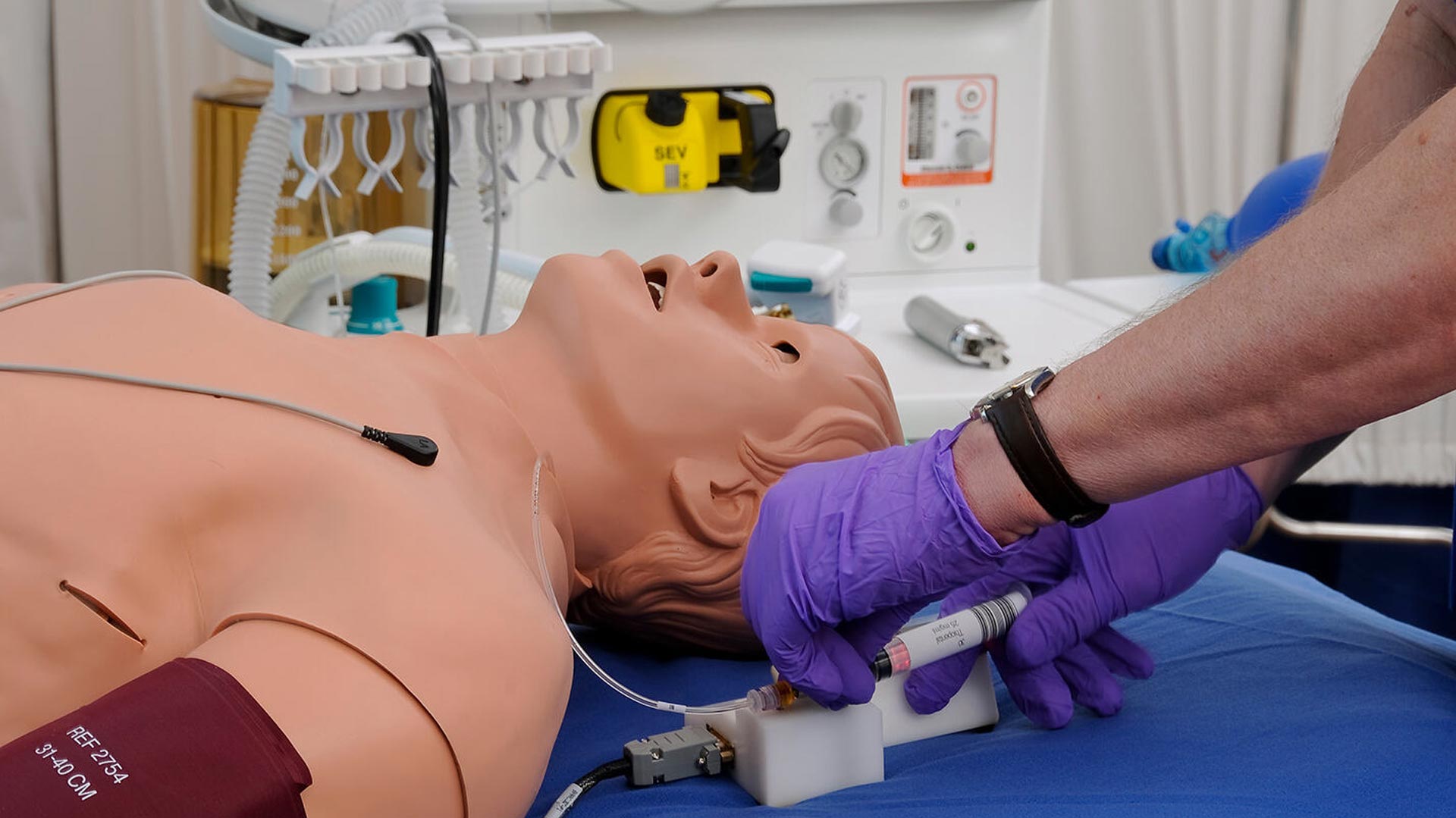
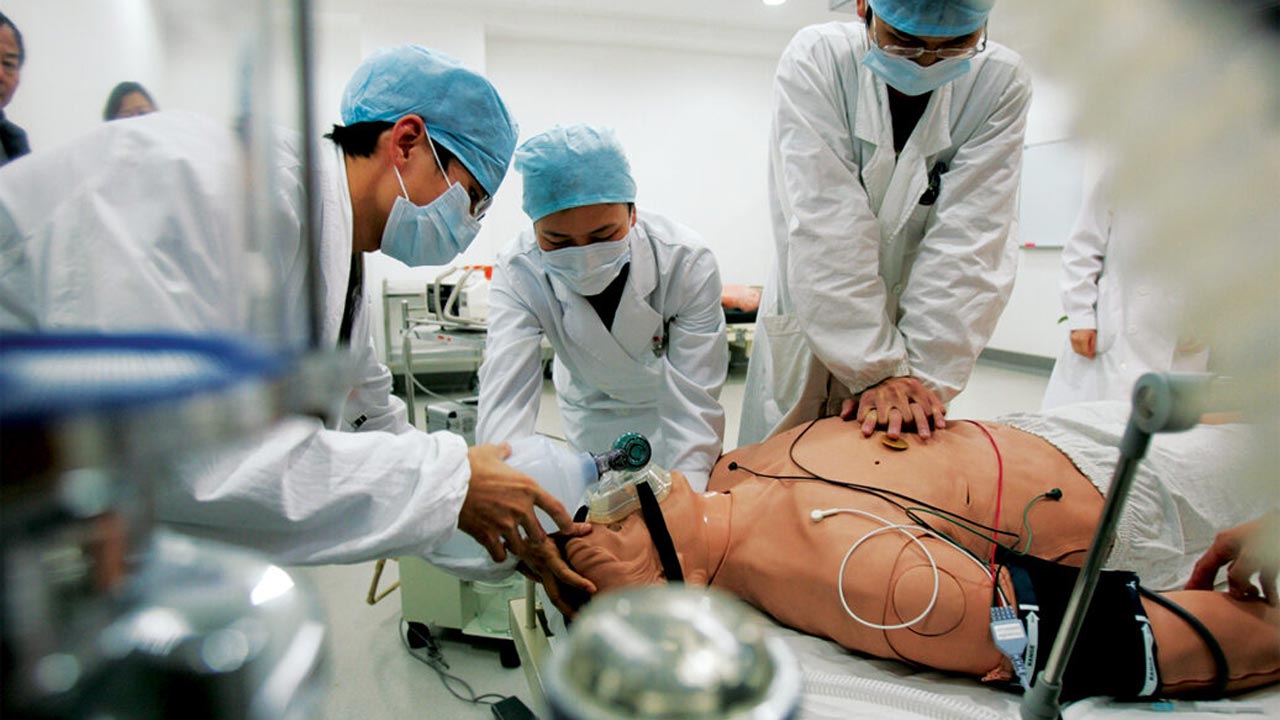
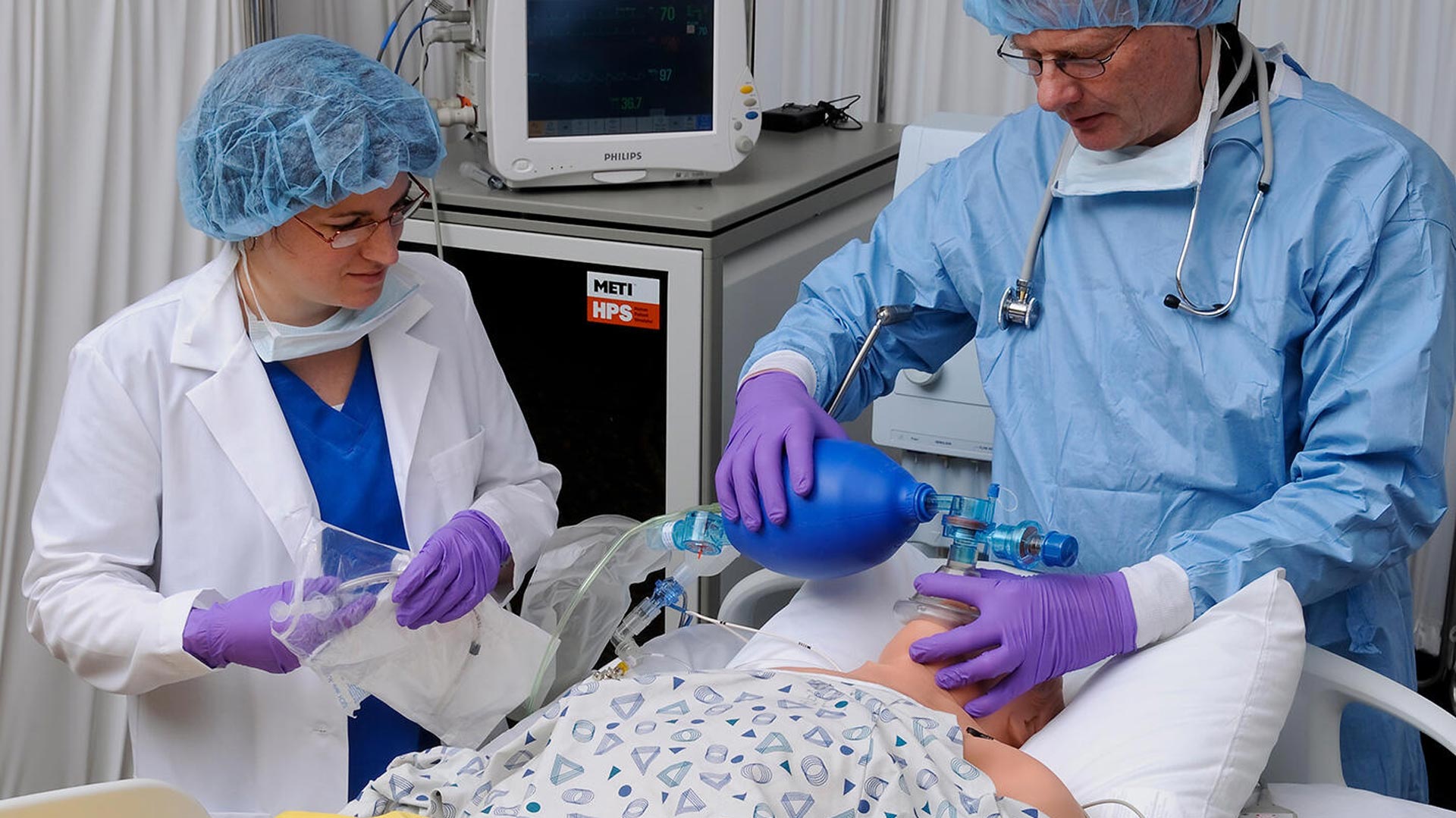
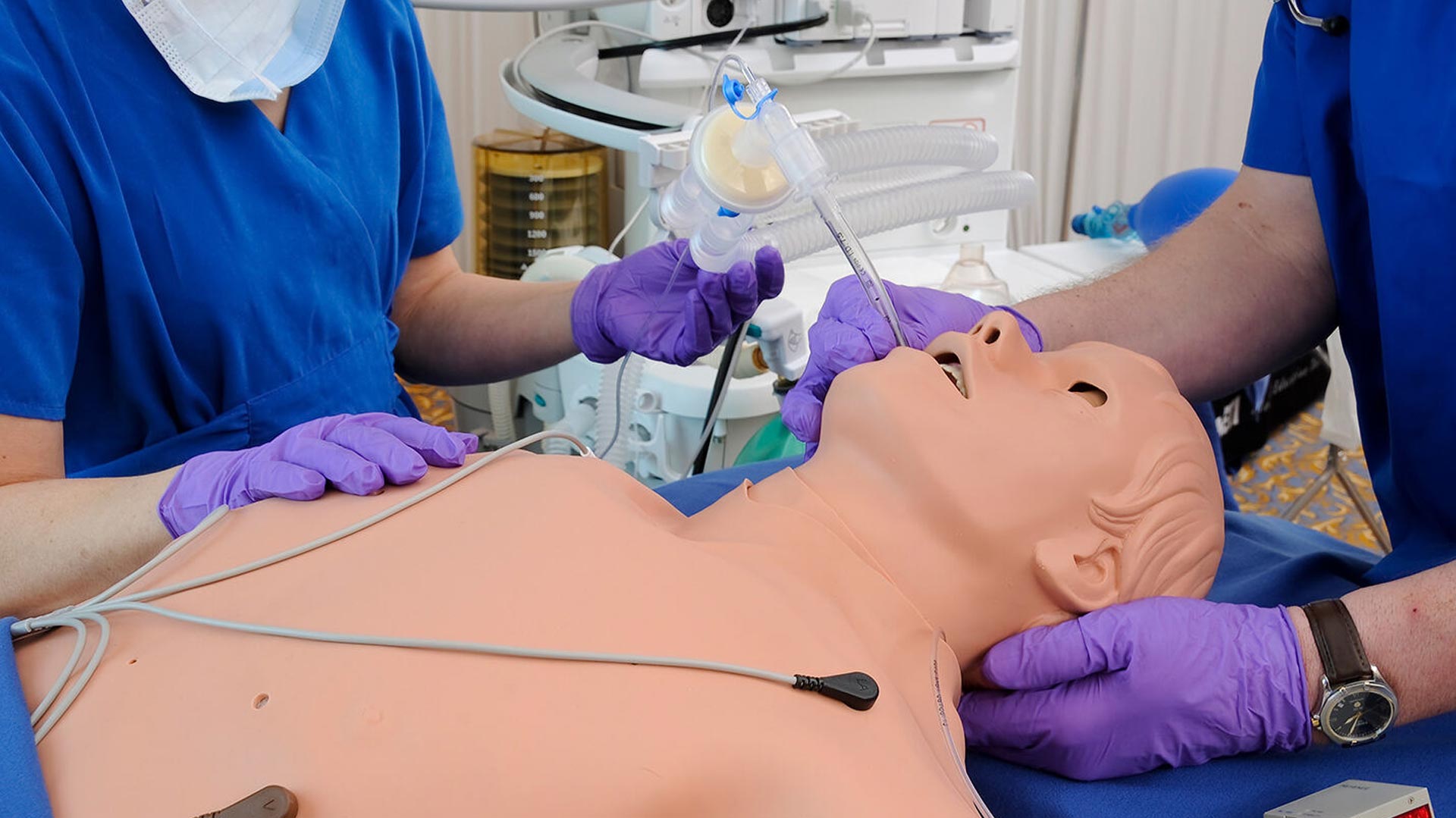
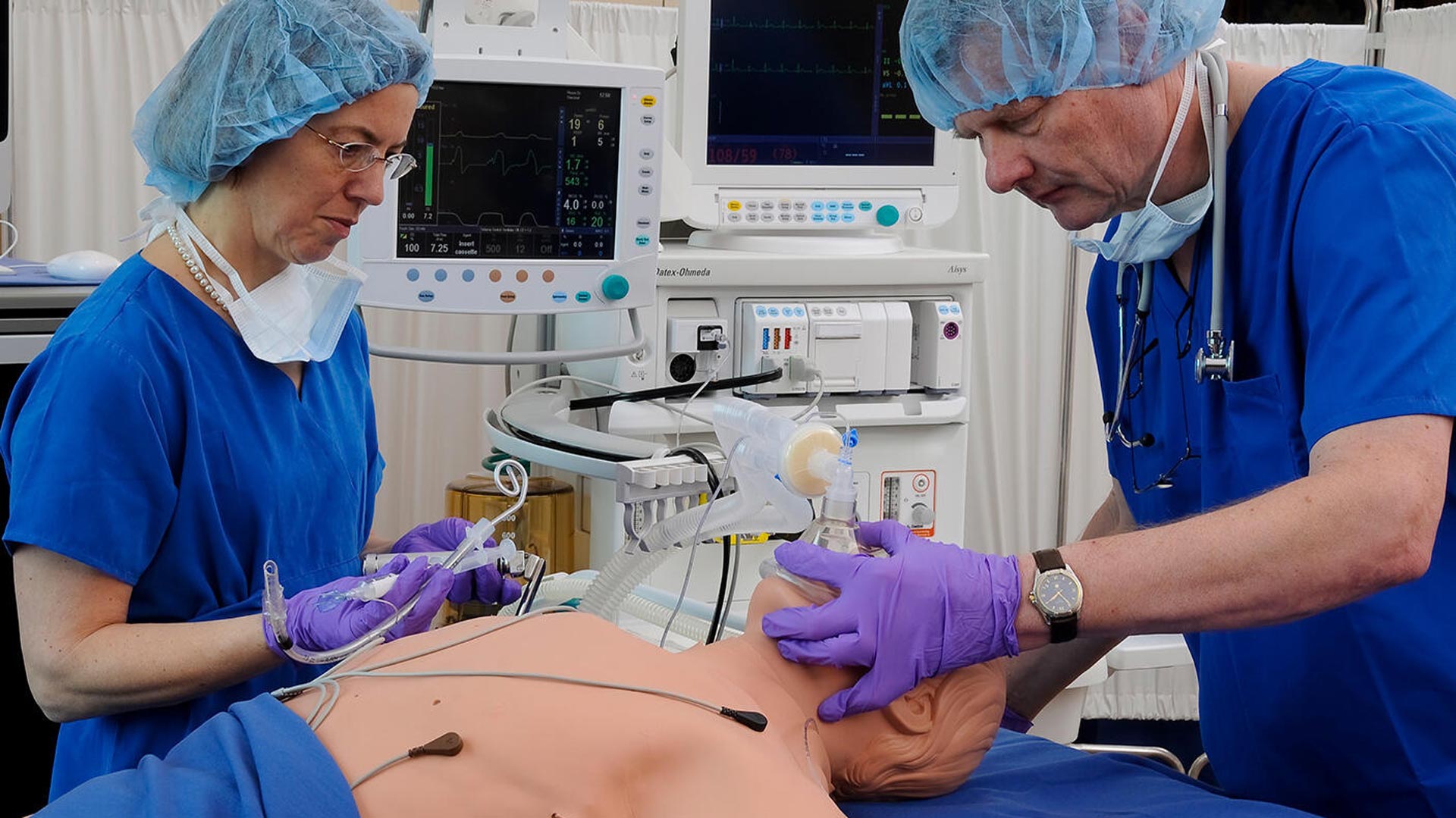
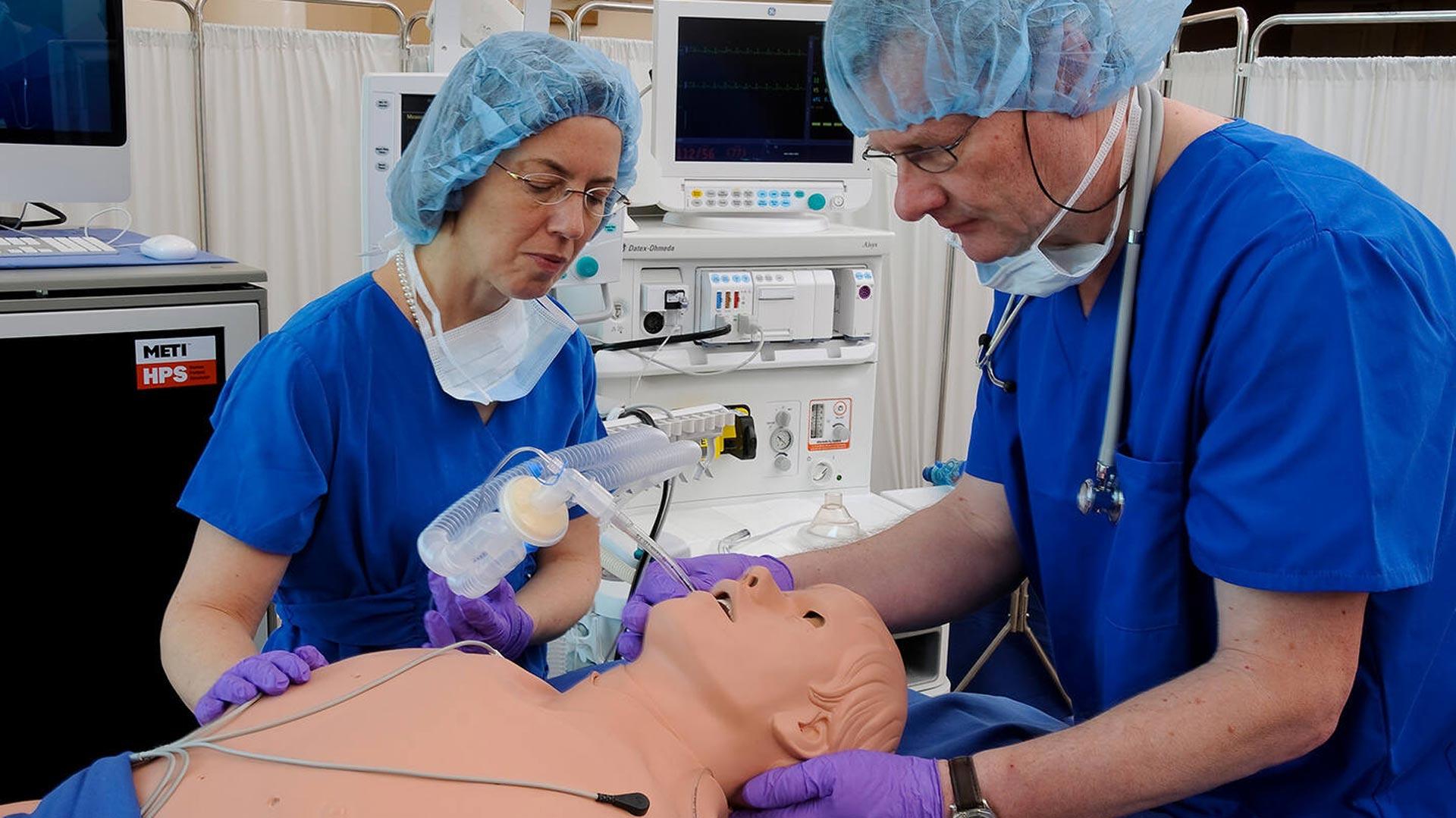

HPS is uniquely capable of consuming oxygen, producing carbon dioxide, and responding to real anesthetic gases, making it the ideal manikin for mastering complex airway, ventilation, and anesthesia protocols
High-Fidelity Physiological Responses
Supports Real Anesthetic Agents and Clinical Devices
Adult & Pediatric Configurations Available
Expands Clinical Realism Across Critical Scenarios
The Human Patient Simulator (HPS) is a full-body, high-fidelity manikin capable of interacting with real clinical devices. From gas exchange to cardiac output, HPS delivers highly dynamic, automatic responses to therapy, ventilation, and medication—all powered by advanced Muse software.
Key Capabilities Include:
For a complete list of technical specifications, download the full spec sheet.
Ensure your HPS simulator stays ready for every training session with Elevate LifeSpanSM Service Agreements. From remote diagnostics to on-site servicing, our plans minimize downtime and protect your investment in high-fidelity simulation.
Available Service Plans for HPS:
Get the most from your HPS system with instructor-led training and educational support. We’ll help you integrate HPS into your curriculum, operate all features with confidence, and elevate your program’s effectiveness in high-stakes simulation.
Through our Achieve Program, our clinical and technical consultants work with you to design, integrate, and deploy high-impact training experiences using HPS—tailored to your program’s goals and learner needs.
Discover how our Achieve Program can transform your outcomes
HPS delivers uncompromising realism in every session. As the only simulator capable of responding to real anesthetic agents and oxygen therapy, it enables learners to practice high-risk, low-frequency interventions in a safe and controlled environment.
Whether preparing for emergency intubation, anesthetic delivery, CPR, or ventilator management, HPS models physiology dynamically, empowering learners to make critical decisions based on patient response.
From trauma to pharmacology to pulmonary care, HPS adapts to your training priorities with unmatched fidelity.
Demonstrate head tilt/chin lift, execute orotracheal and nasotracheal intubation, deliver BVM ventilation, perform cricothyrotomy, manage spontaneous respiration, adjust lung compliance, and practice bilateral needle decompression.
Administer anesthetic gases, monitor oxygen consumption and CO₂ exhalation, trigger ventilators, simulate resistance, and manage fight-the-ventilator scenarios.
Deliver live defibrillation and pacing, interpret dynamic ECGs, simulate cardiac output, and insert pulmonary artery catheters with real-time waveform monitoring.
Measure blood pressure by auscultation and palpation on the left arm, assess six peripheral pulses, and evaluate physiologic response to effective chest compressions.
Identify drugs using barcode scanning, track doses, and observe automatic physiologic responses to over 50 medications.
Assess reactive pupils, observe blinking and convulsions, and monitor automatic deterioration linked to respiratory or cardiac compromise.
Evaluate secretions, perform diagnostic peritoneal lavage and pericardiocentesis, practice urinary catheterization with interchangeable genitalia, and monitor fluid-free urine output.
Practice IV cannulation with realistic flashback, manage right jugular and left femoral IV lines, and perform right deltoid intramuscular injections.
